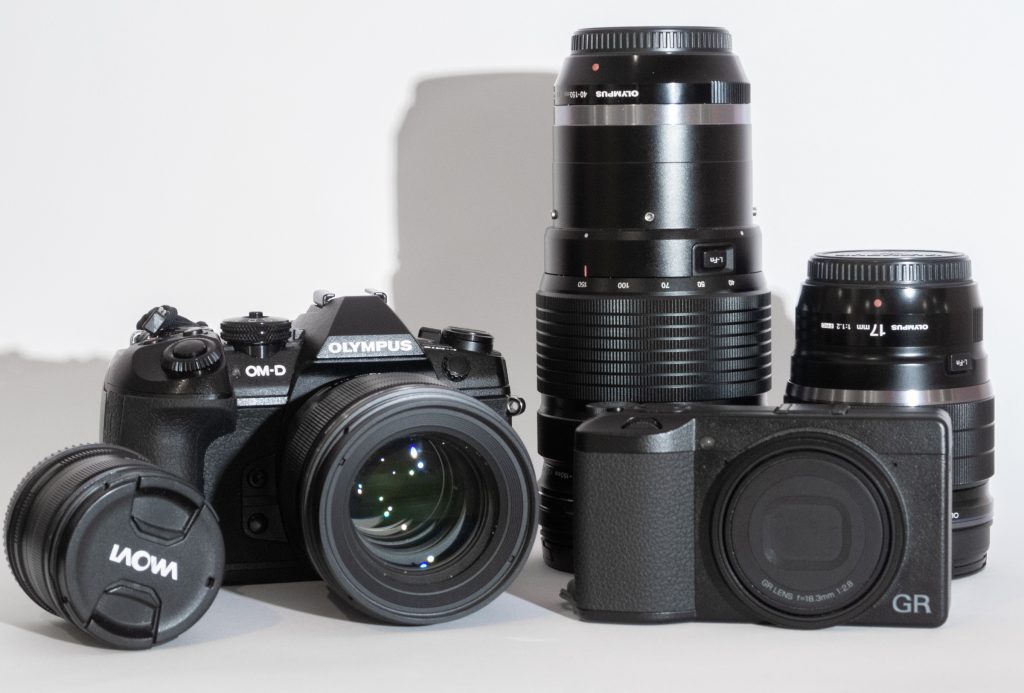For someone with an interest in low-light photography I have an unusual choice of cameras. Conventional wisdom would point you to a full-frame camera from Canon, Nikon or Sony because of their good high-ISO performance. But I use a micro four-thirds camera from Olympus, the OMD EM1 mk2. Why? Because of its smaller sensor the lenses can be a fraction of the size, weight and price of their full-frame equivalents. So I use the Olympus f/1.2 prime lenses. The big aperture lets in around 6 times as much light as an f/2.8 lens and 11 times as much as an f/4.0 lens. Combined with the amazing Olympus image stabilisation, I can work at ISO’s and hand-held shutter speeds that allow me to shoot in extremely low light and, with a small and light camera. A further advantage of the Olympus is that both the camera and the lenses are weatherproof. I can shoot all day in the pouring rain and the camera is just fine. The Ricoh is my pocket camera. With the image quality of a DSLR in a tiny package, the GR3 is much loved by Japanese Street photographers.

I also have a telephoto lens. The Olympus 40-150mm f/2.8 Pro. Great quality and super light. But maybe my favourite lens right now is the Laowa 7.5mm ultra-wide angle. This is a tiny little lens with an amazingly wide field of view. Just perfect for tight little spaces amongst buildings. It’s a Chinese lens and totally manual in operation. At first I was a little concerned that it would be a disappointment but nothing could be further from the truth.
For editing I use Lightroom CC. I’ve never learned to use Photoshop so I don’t do any fancy composite images. Just some adjustments to brightness, contrast and colour balance. But Lightroom gives you a lot of adjustment power – especially when you shoot RAW image files. I’ll give an example of “how to edit a night photograph” in another post.